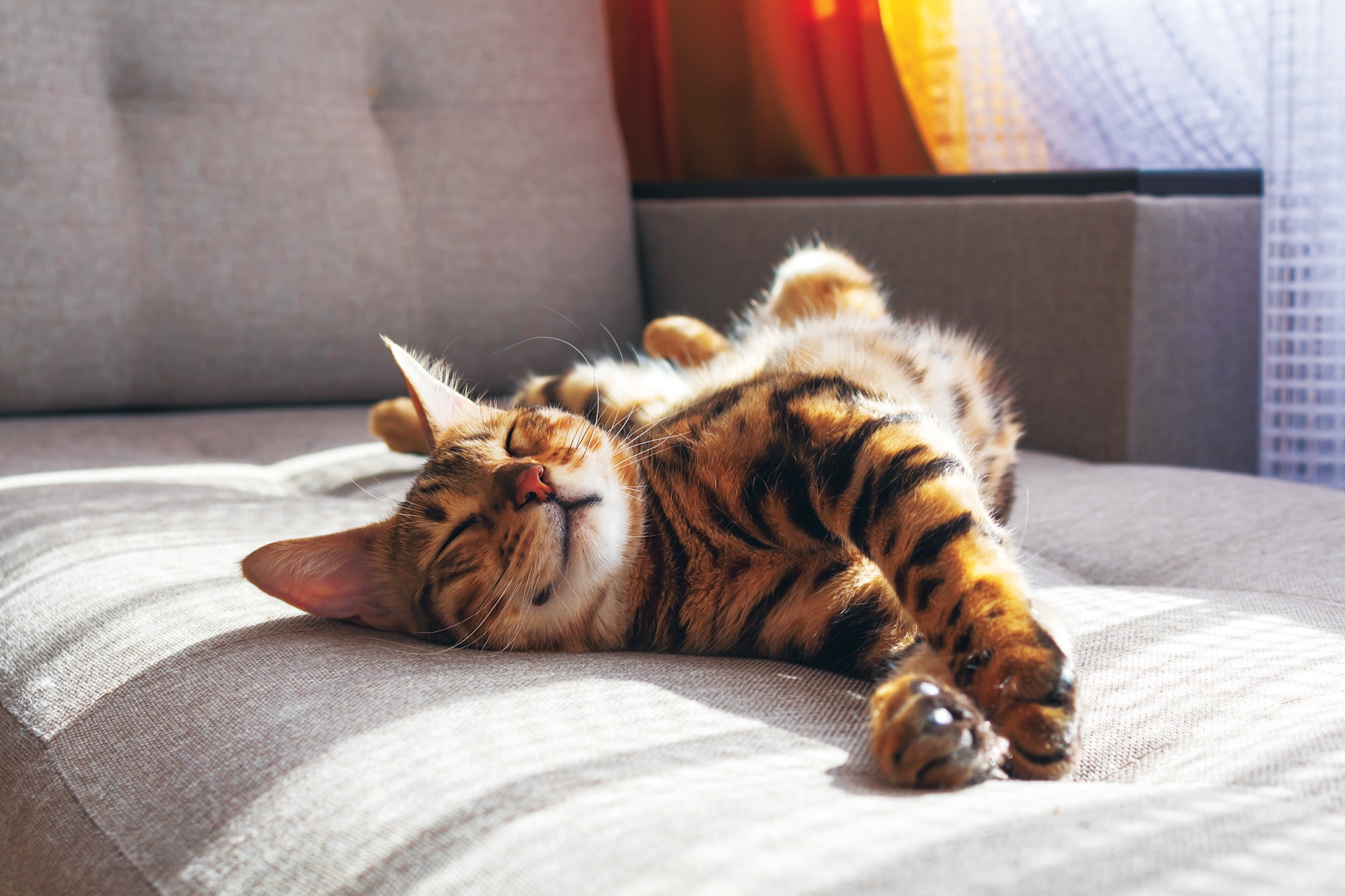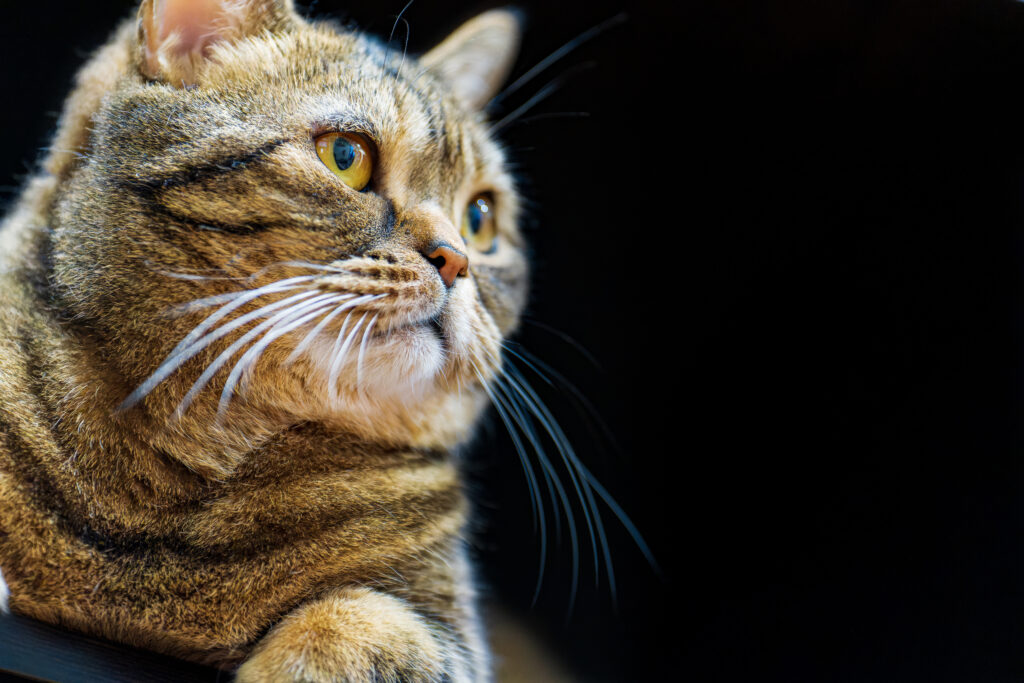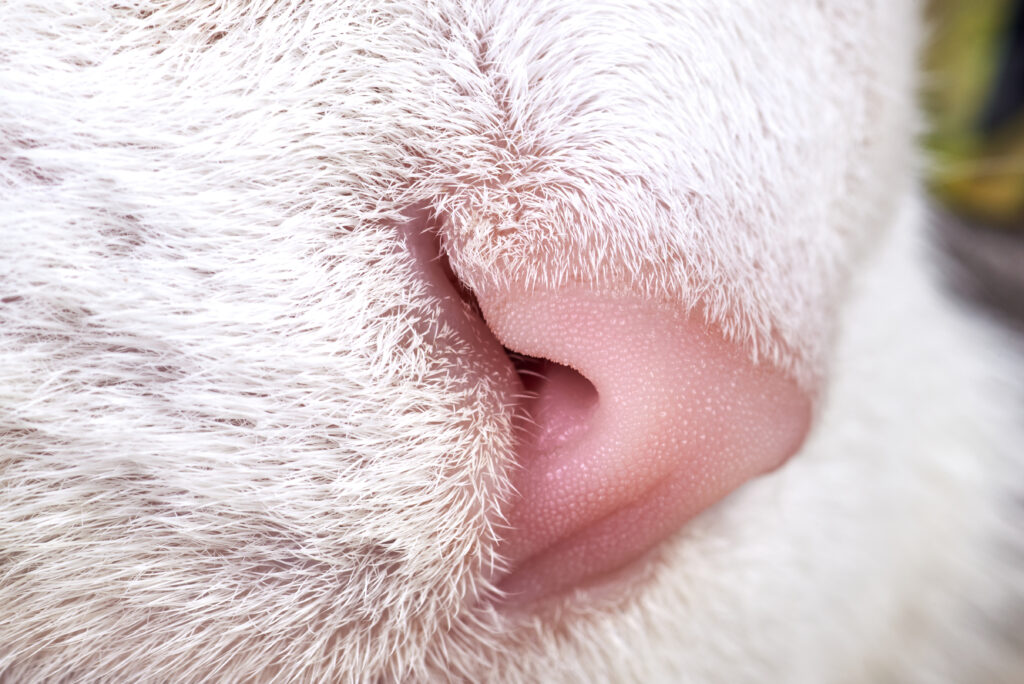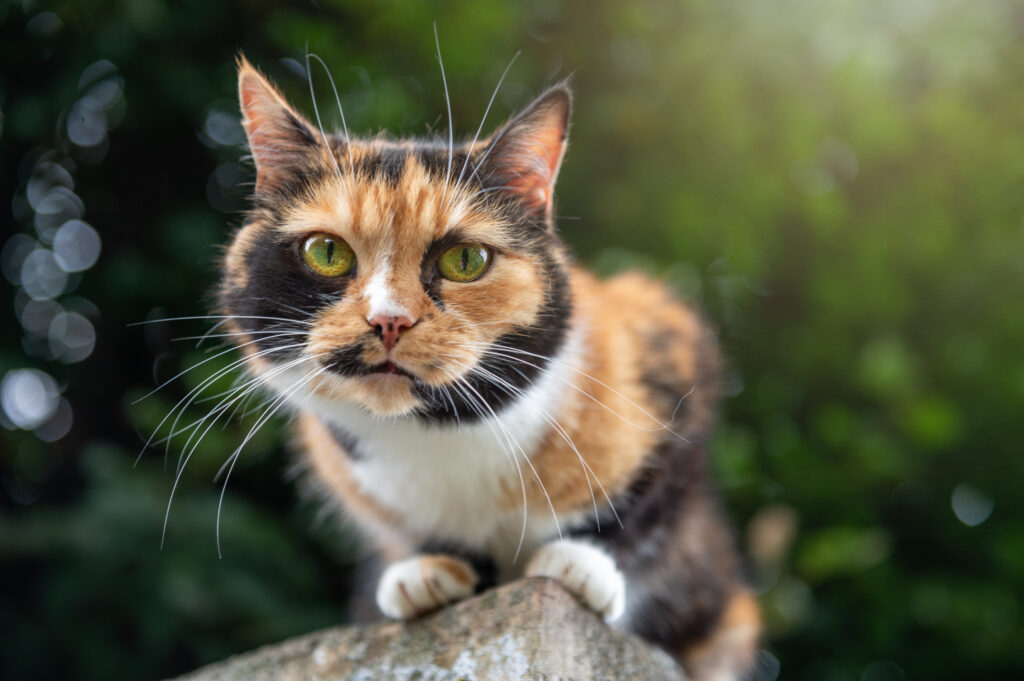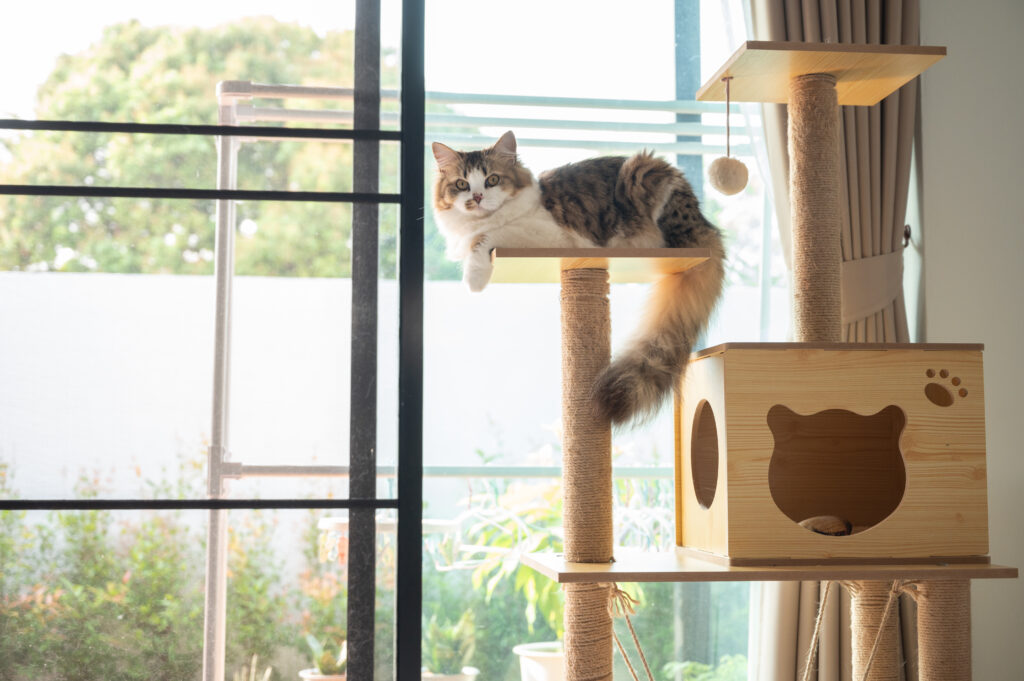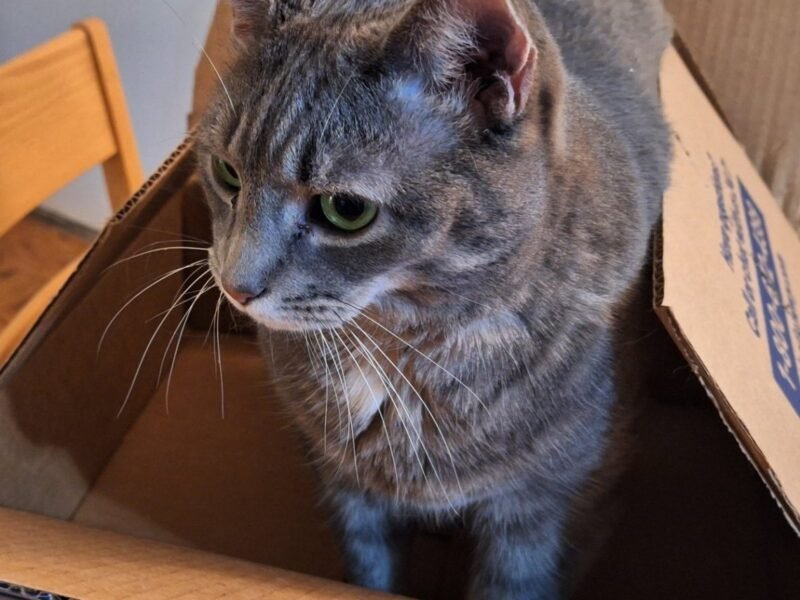Social gathering? Try these fun and fascinating cat facts to get the conversation flowing!
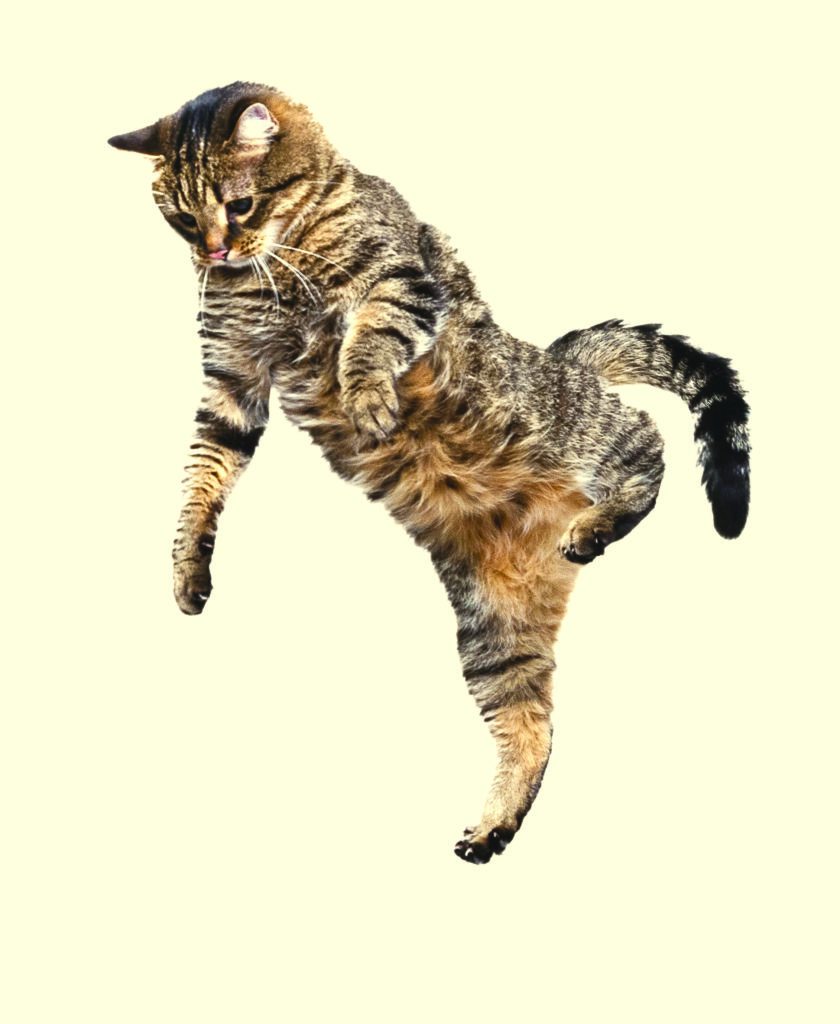

Photo master1305/Bigstock.com
#1 Nine Lives
Though cats don’t always land on their feet, nor do they have nine lives, they do have something called a “righting reflex.” Their eyes and the balance organs in the inner ear tell cats where they are in space. This helps them to most often land on their feet and survive falls—in one case more than 30 stories!
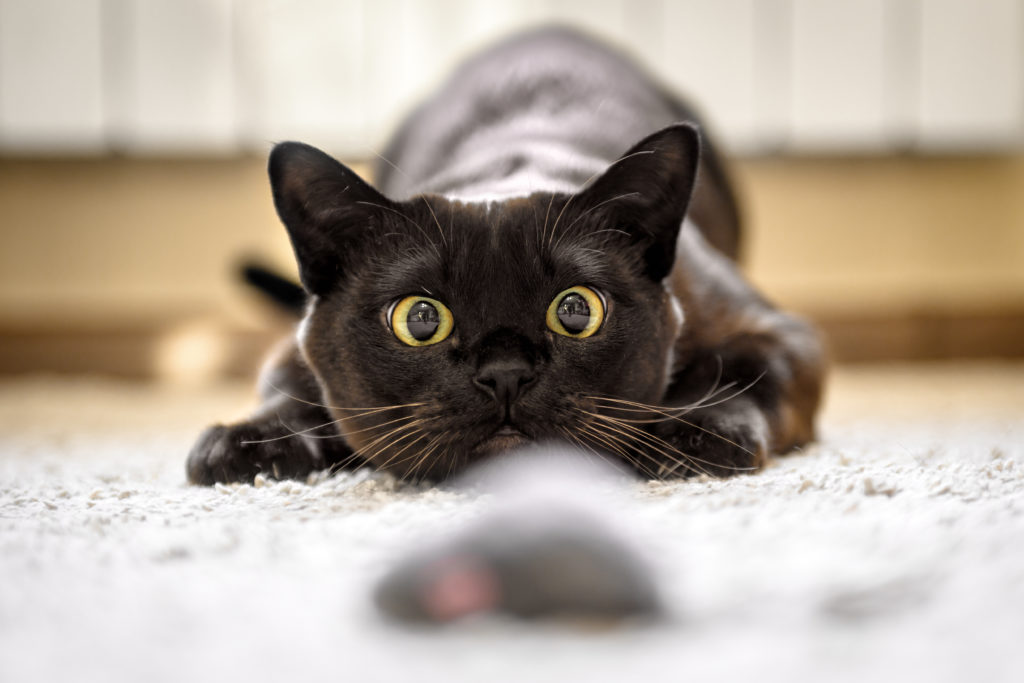

Photo Scaliger/Bigstock.com
#2 Cats: Olympic Athletes In Feline Form
Cats can jump up to six times their height, a distance in excess of five feet.


Photo Viorel Sima/Bigstock.com
#3 Cats with a Sweet Tooth? Not So Much…
Cats, even those that are food motivated, will probably not be tempted by sweet treats. Unlike people and dogs, cats do not have taste receptors for sweet flavours.
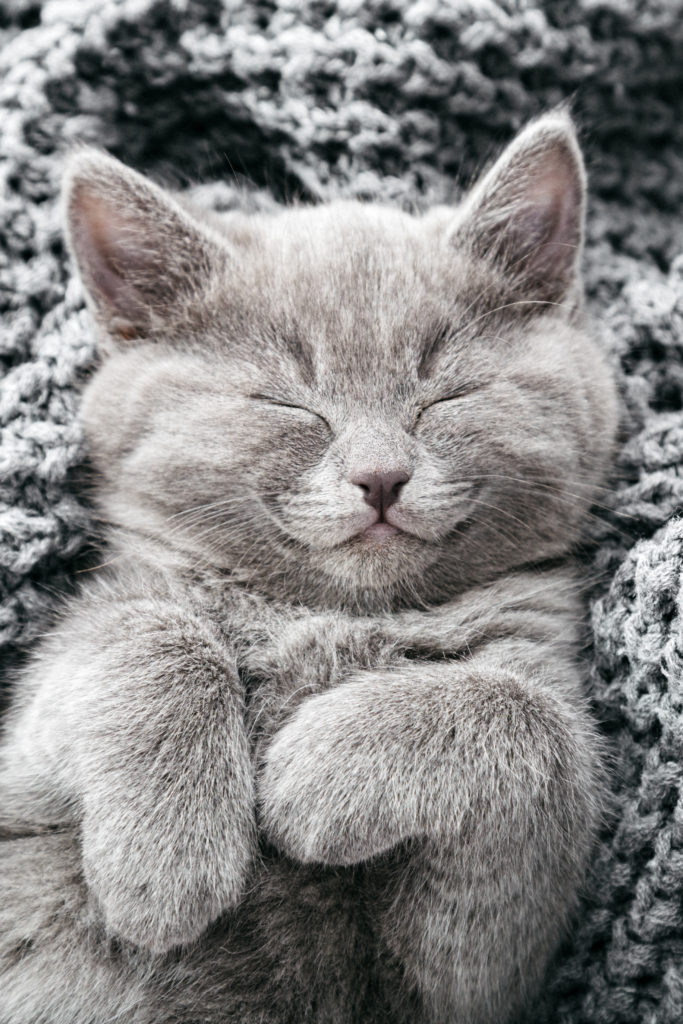

Photo Beton studio/Bigstock.com
#4 It’s a Cat’s Life
There’s a reason it’s called a cat nap. Domesticated cats spend about 70 percent of the day sleeping. Another 15 percent is devoted to grooming.
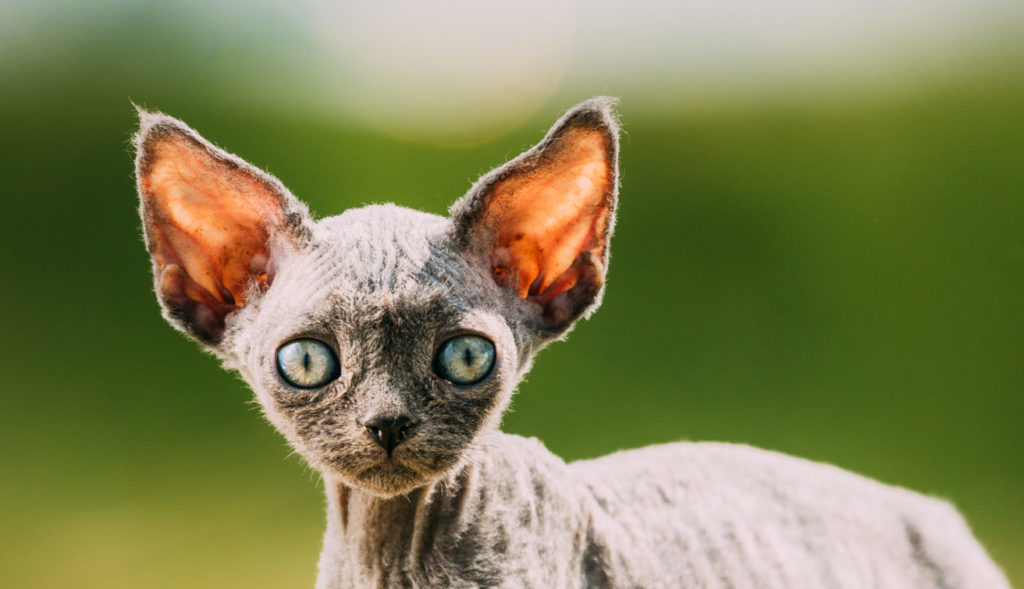

Photo Grisha Bruev/Bigstock.com
#5 Did You Hear That? Your Cat Did
Cats have exceptional hearing. Felines have 32 ear muscles that allow for directional hearing. In contrast, humans only have six ear muscles. Cat ears can rotate independently 180 degrees.
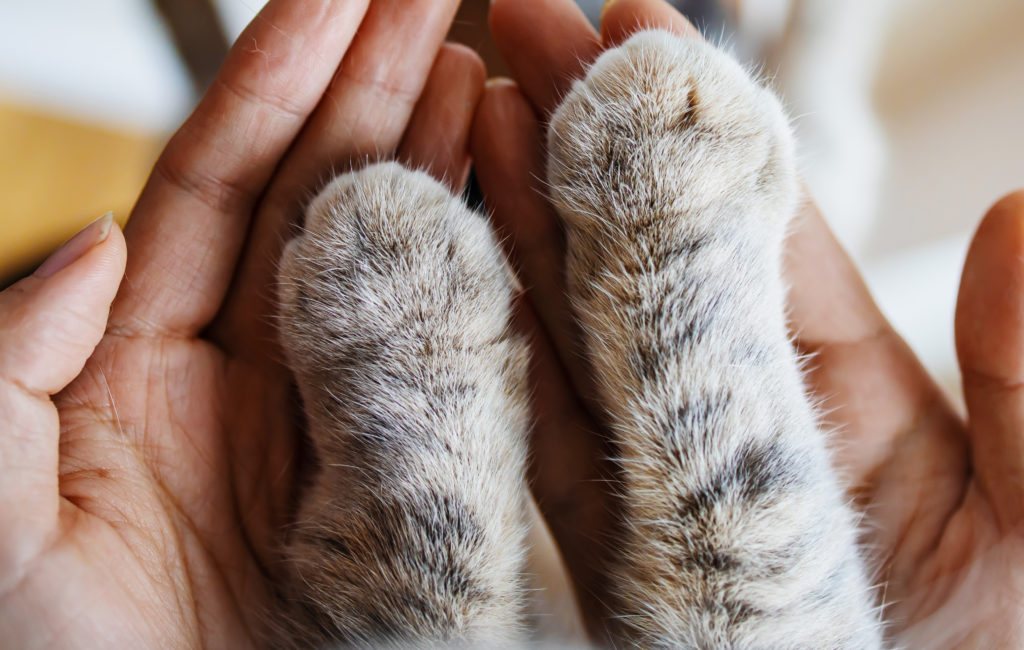

Photo yanya/Bigstock.com
#6 Keep Cats Claws on Their Paws
Declawing cats is illegal in at least 42 countries, including England, France, Wales, New Zealand, Germany, Switzerland, and Israel—but not the United States. In 2019, New York became the first state in the U.S. to outlaw declawing. In Canada, declawing is outlawed in eight provinces—Newfoundland and Labrador, New Brunswick, Alberta, Nova Scotia, British Columbia, Prince Edward Island, Saskatchewan, and Manitoba.
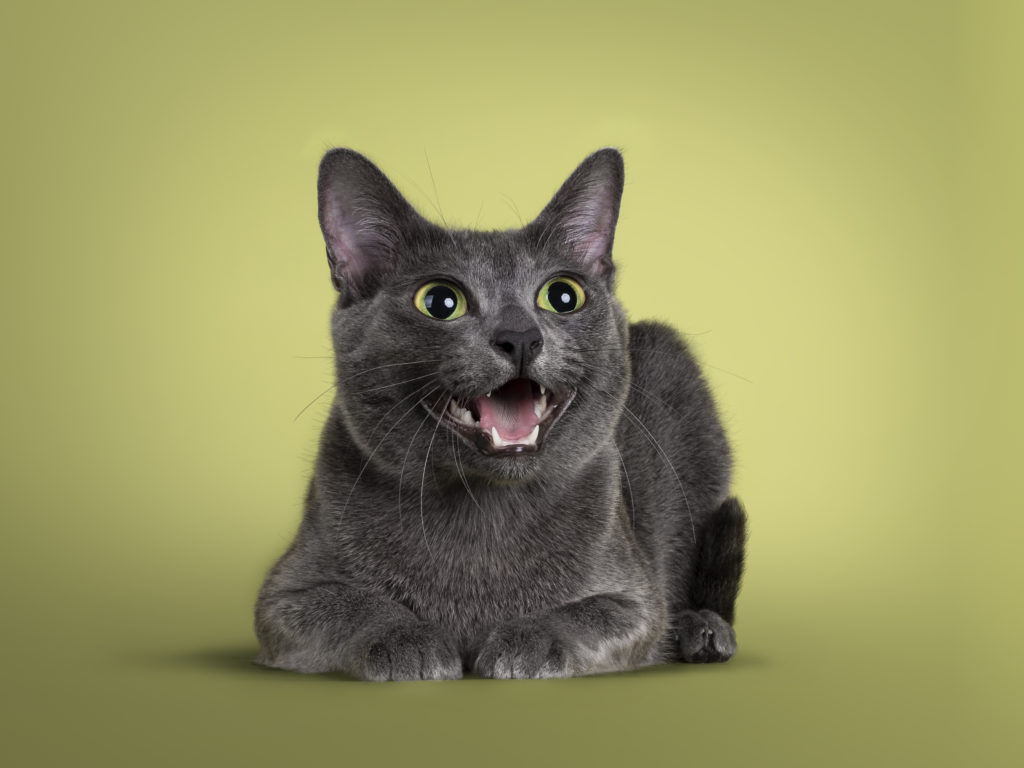

Photo NynkevanHolten/Bigstock.com
#7 Your Cat is Talking To You
Adult cats typically don’t communicate with each other via meowing. Rather, this vocalization is produced almost exclusively to communicate with humans.


Photo SerGrey/Bigstock.com
#8 Pass on the Dairy
Cats have classically been depicted lapping from a bowl of milk or cream, but cow’s milk isn’t the best food for most cats as it may cause stomach upset. Try nutrient rich goat’s milk or water instead.

 Photo NatalliaS/Bigstock.com
Photo NatalliaS/Bigstock.com
#9 I Hear You, I Just Don’t Care to Respond
Studies show that cats know and recognize their names, but often do not come when called. So, if you think your cat is simply ignoring you, you’re probably right.
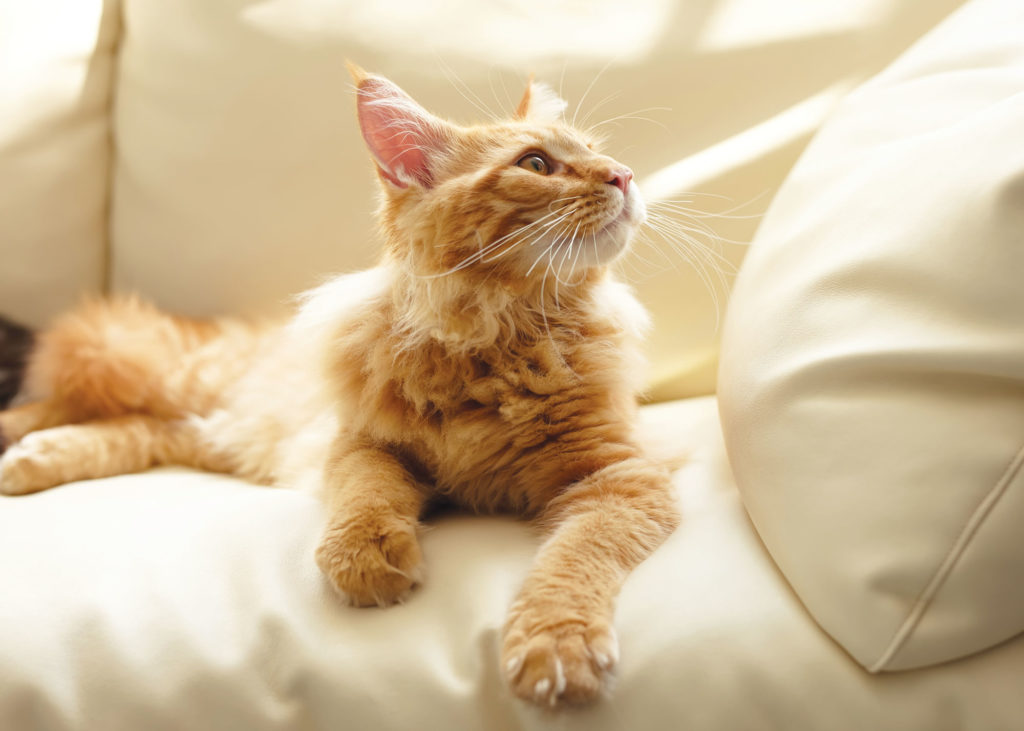

Photo Inna Vlasova/bigstock.com
#10 Here, Kitty Kitty
Cats respond most readily to names that end in an “ee” sound, which naturally is vocalized in a higher intonation. “A study was done several years ago to show that cats respond to their name much better if the name terminates in a high-pitched sound,” explains veterinarian Dr. Burstyn of Vancouver, BC. “For example, Lancelot ends on a low sound. He’s much less likely to respond [to] that than if we call him Lancey.”
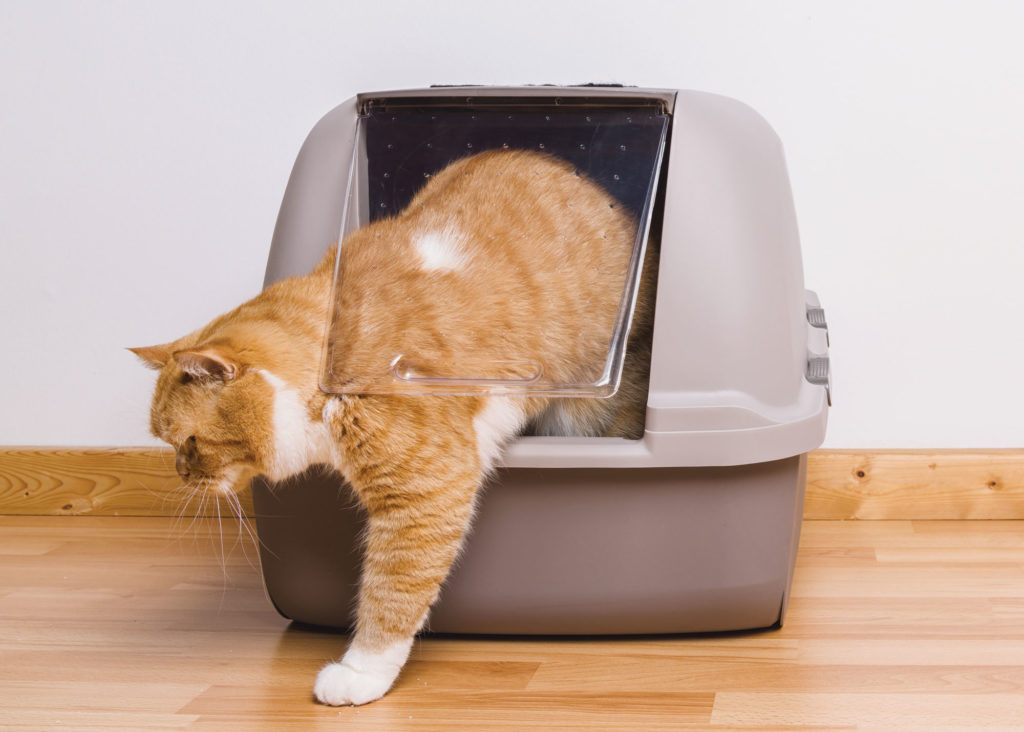

Photo r.classen/bigstock.com
#11 Evol-eww-tion
Due to their desert origins, cats evolved to absorb large amounts of water from their urine to stay hydrated. The result? Extra concentrated, extra smelly cat pee.


Photo Oleksandr Khoma/shutterstock.com
#12 Cranium Collab
Ever feel like you and your cat are two of a kind? Research shows that humans and cats share a similar brain structure. The way we process memories, emotions, and the five senses are shared with our feline companions, according to Nicholas Dodman, BVMS, MRCVS, animal behavior chief at Tufts University School of Veterinary Medicine in Boston.
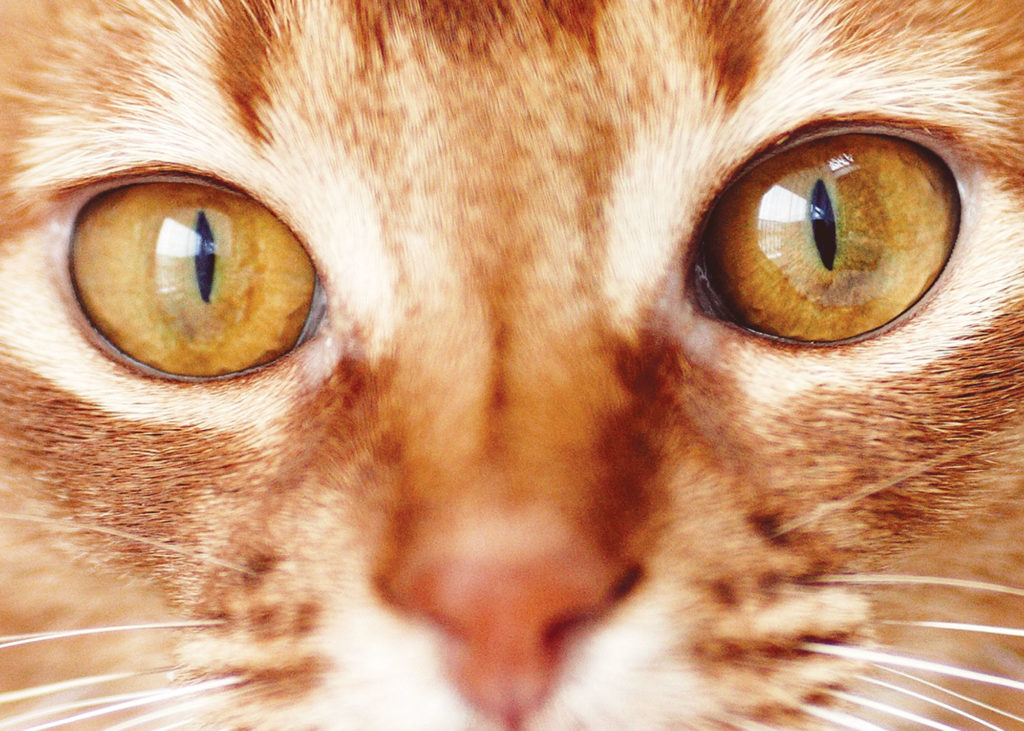

Photo mohamed said ghazy/bigstock.com
#13 Eye See You
Though they have an acute sense of sight and can see exceptionally well in complete darkness—approximately six to 10 times better than humans can—cats have a blind spot under their nose. They cannot see objects well that are directly in front of them, or under their nose or chins. They also perceive motion better than colour. Cats see mostly blues, purples, and greens, perceiving reddish tones less clearly.
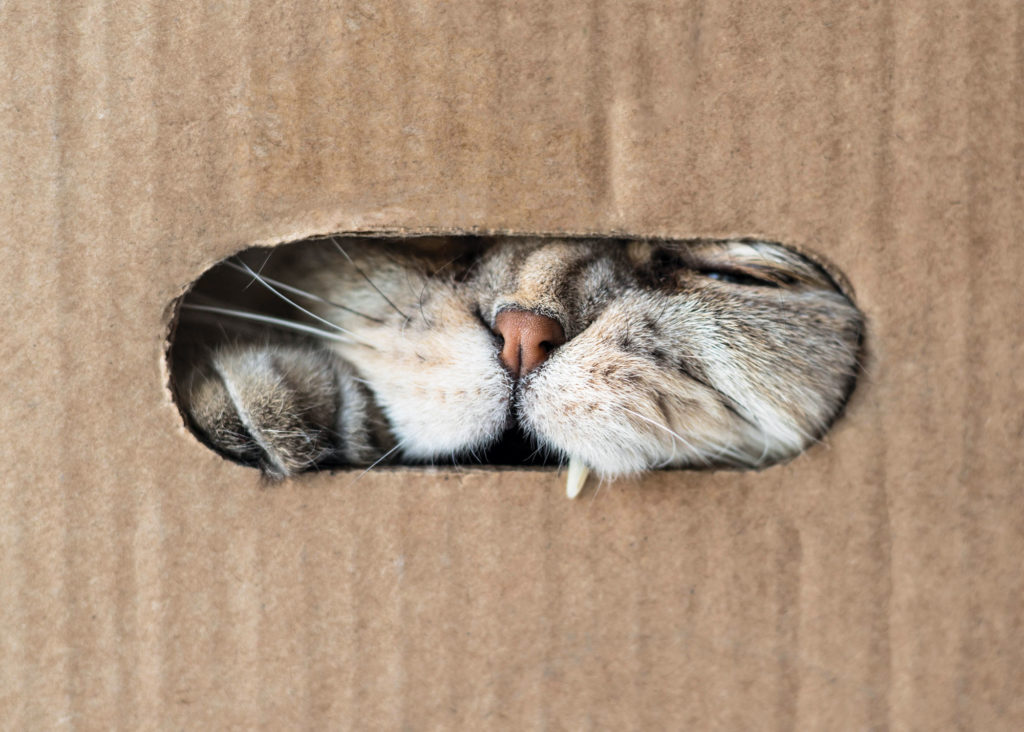

Photo Regina Erofeeva/bigstock.com
#14 Cats + Boxes, a Love Affair
Is your cat stressed? Give him a box to hide in. Animal experts believe that small, enclosed spaces make cats feel secure and protected. Shelter cats are sometimes given boxes to snuggle in to reduce their stress levels with good reason. A Dutch study divided 14 shelter-intake cats into two groups—those provided with a hiding box and those without. By measuring the cats’ Kessler and Turner Cat-Stress-Score (CSS), the study determined that cats provided with a box were able to recover faster in their new environment. The researchers determined the hiding box was an important enrichment for the cats to cope effectively with stressors in a new shelter environment in the first weeks after their arrival.


Photo Beton studio/bigstock.com
#15 I’ll Take A Dozen!
A group of kittens is called a kindle, while a group of fully-grown cats is called a clowder.
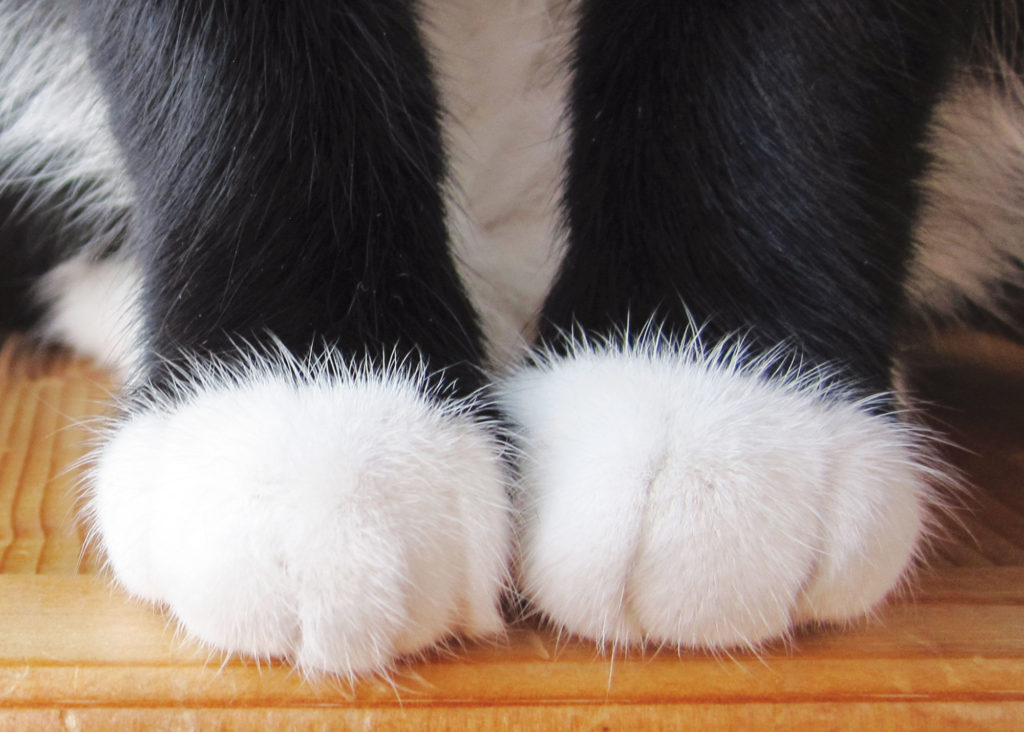

Photo YLYASTIK/bigstock.com
#16 Not Just Southpaws
Male cats are more likely to be left-pawed, while females are more likely to be right-pawed. 11 percent of cats are ambidextrous.


Photo Antibydni/bigstock.com
#17 Cat, M.D.
According to professors at the School of Veterinary Medicine in UCLA, investigators have found that the sound frequency of purring can “improve bone density and promote healing” in humans and cats.
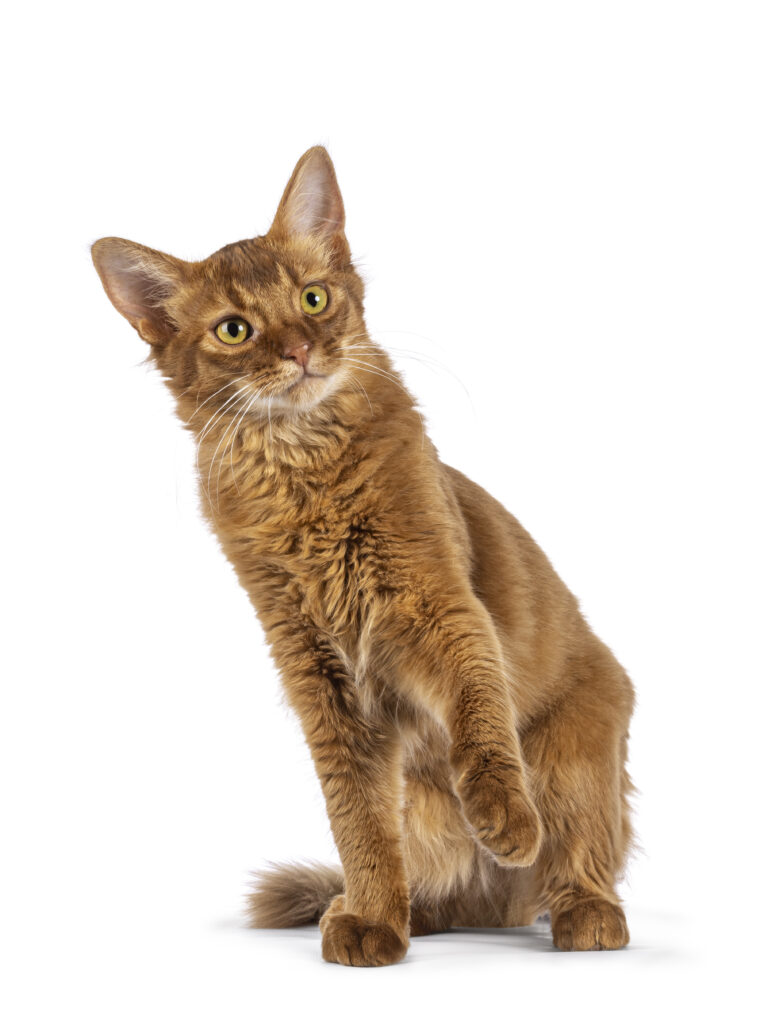

Photo NynkevanHolten/bigstock.com
#18 Cats Have Wrist Whiskers
Not only do cats have whiskers on their face, but they also have a set of whiskers on the backs of their front legs. Look at your cat’s forearms, and you’ll see a few small tactile hairs growing on the back of them called carpal vibrissae, named for the Greek carpus, meaning wrist.
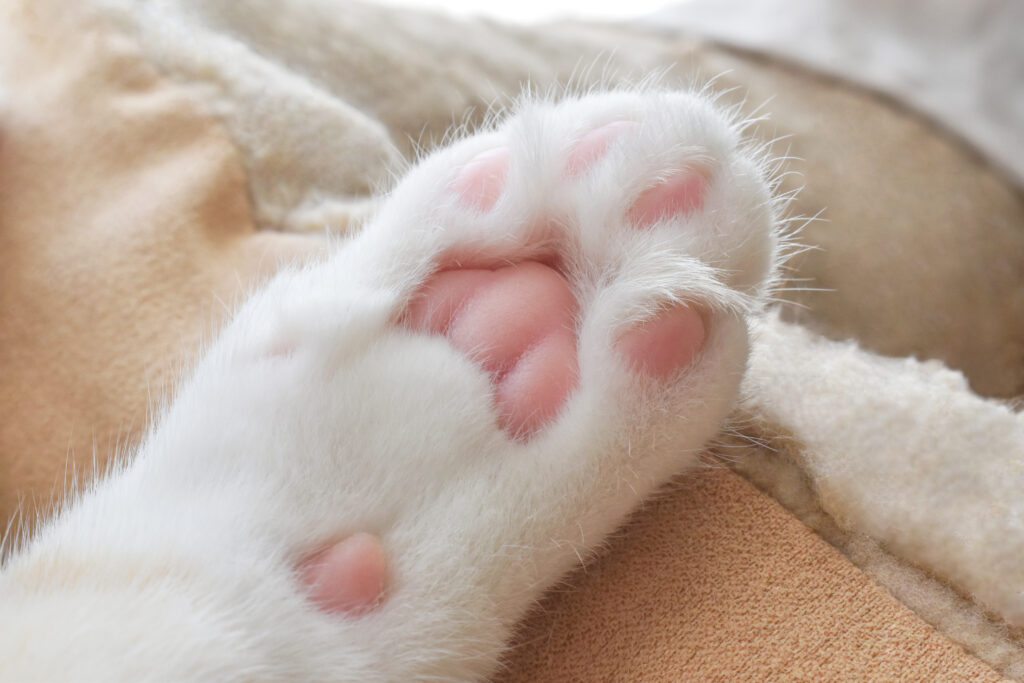

Photo Maliflower73/bigstock.com
#19 Toe Beans
Most cats have 18 toes—five toes on each of their front paws and four on their back paws. However, Polydactylism, a condition in which cats are born with extra toes, is very common. Polydactyl cats are most frequently found in Western England, Wales, Canada, and the Eastern United States. Their prevalence in those geographic areas regions is often credited to their days on transcontinental ships—polydactyl cats were thought to be lucky and were kept on sailing ships as mousers.
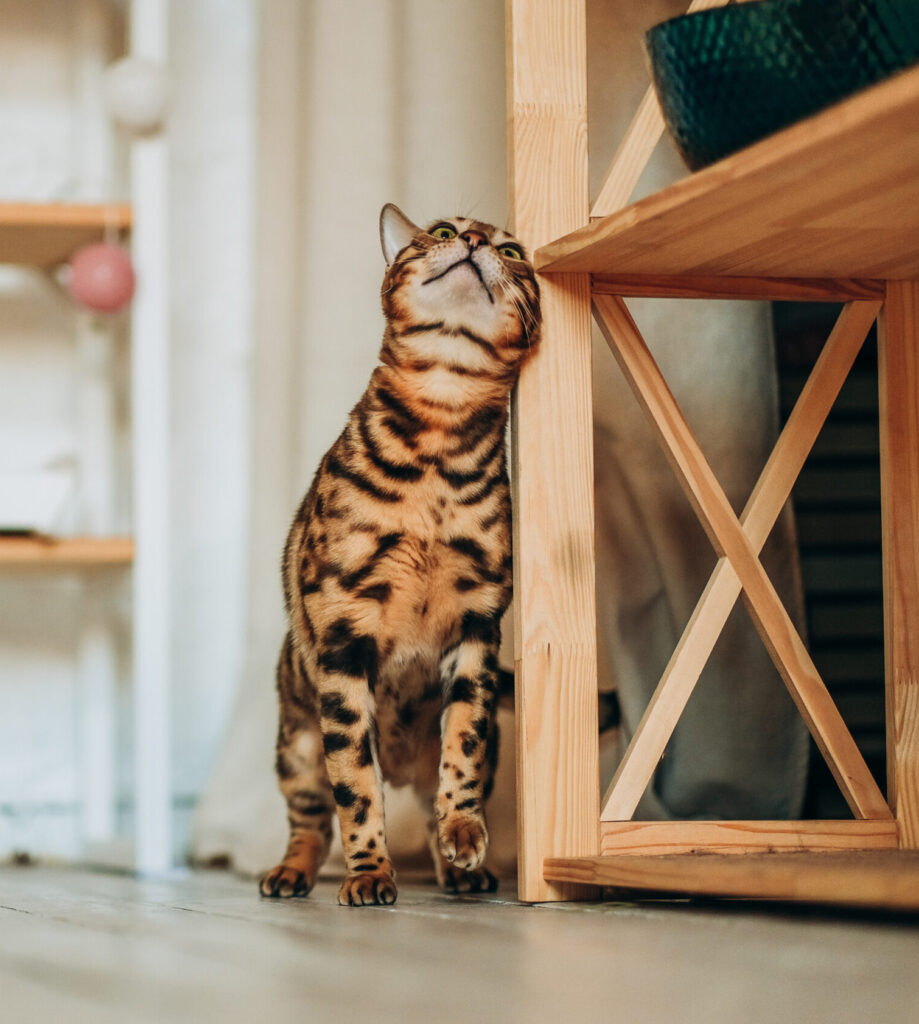

Photo sergo4/bigstock.com
#20 You’re Mine
Cats rub against people not only to be affectionate but also to mark out territory using the scent glands on their faces. They also mark objects in the same way.


illustration alexandra.klestova/bigstock.com
#21 Cats Ruled Ancient Egypt
In ancient Egypt, cats were revered creatures who were believed to bring good luck. They were adorned in jewelry in life and mummified after death. When a family cat died, the members of the household shaved their eyebrows as a sign of mourning and continued to mourn until their eyebrows grew back.
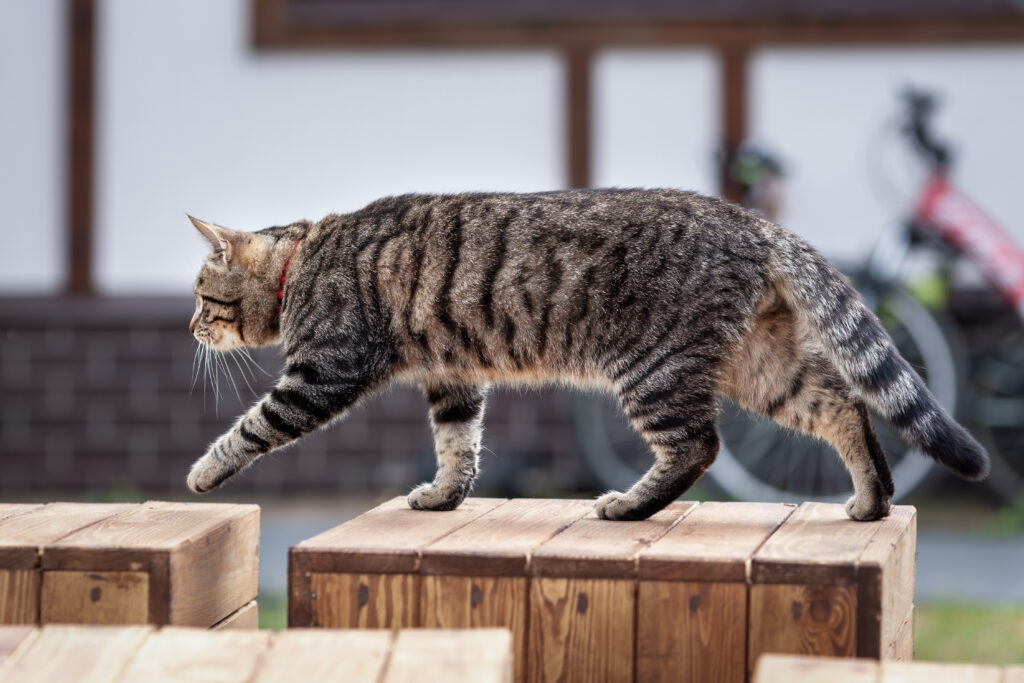

Photo IrinaNedikovaIrinaNedikova/bigstock.com
#22 Catwalk
Cats walk like camels and giraffes. They move both right feet first, followed by both left feet, moving half of their body forward at once. Camels and giraffes are the only other animals to walk with this sequence.
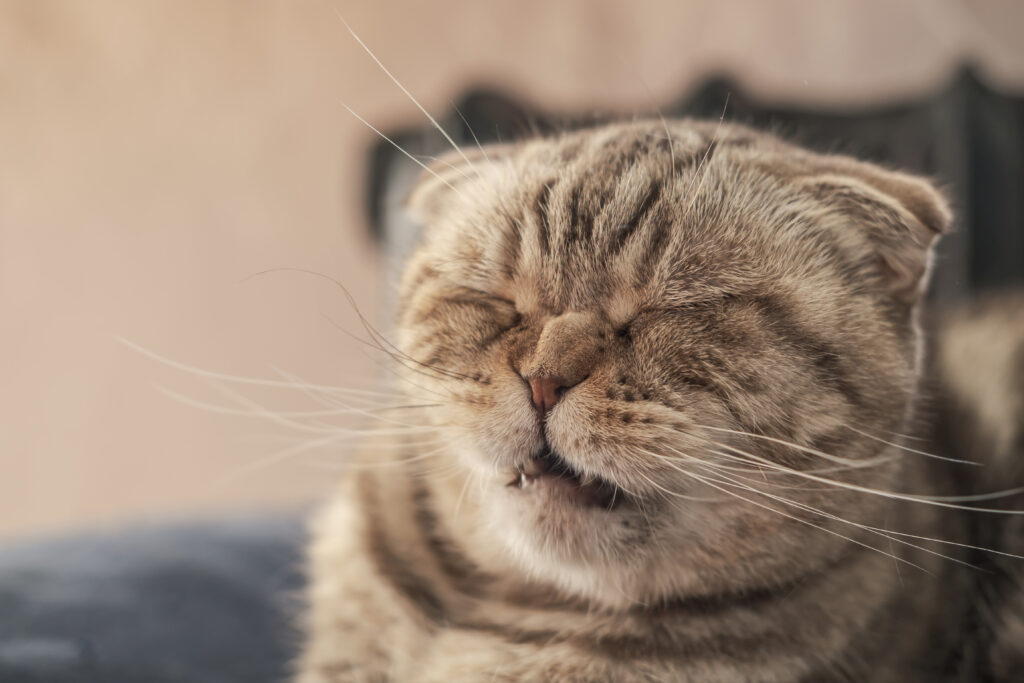

Photo koldunova-scaled/bigstock.com
#23 Achoo!
In a role reversal, people are causing breathing problems in cats. One in 200 cats is believed to have asthma that is irritated by human dandruff, smoke, dusty homes, and pollen.
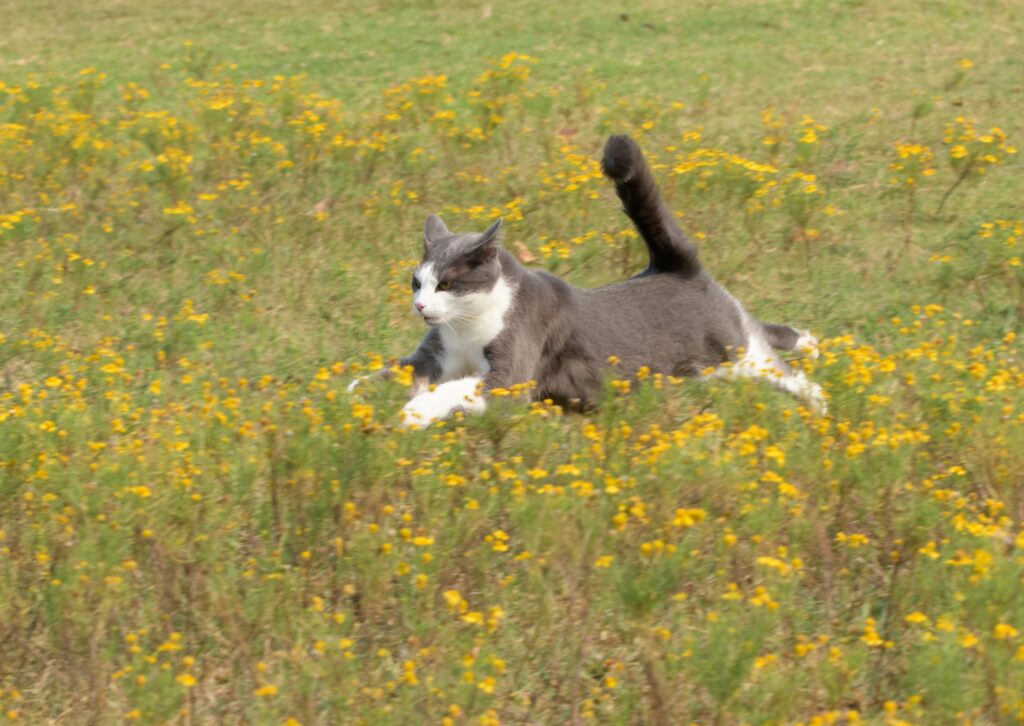

Photo Sari-ONeal/bigstock.com
#24 The Bolt
The average, healthy house cat can run at the remarkable speed of about 30 mph (48 km/h) over short distances. This means that a cat can easily outpace superstar runner Usain Bolt!
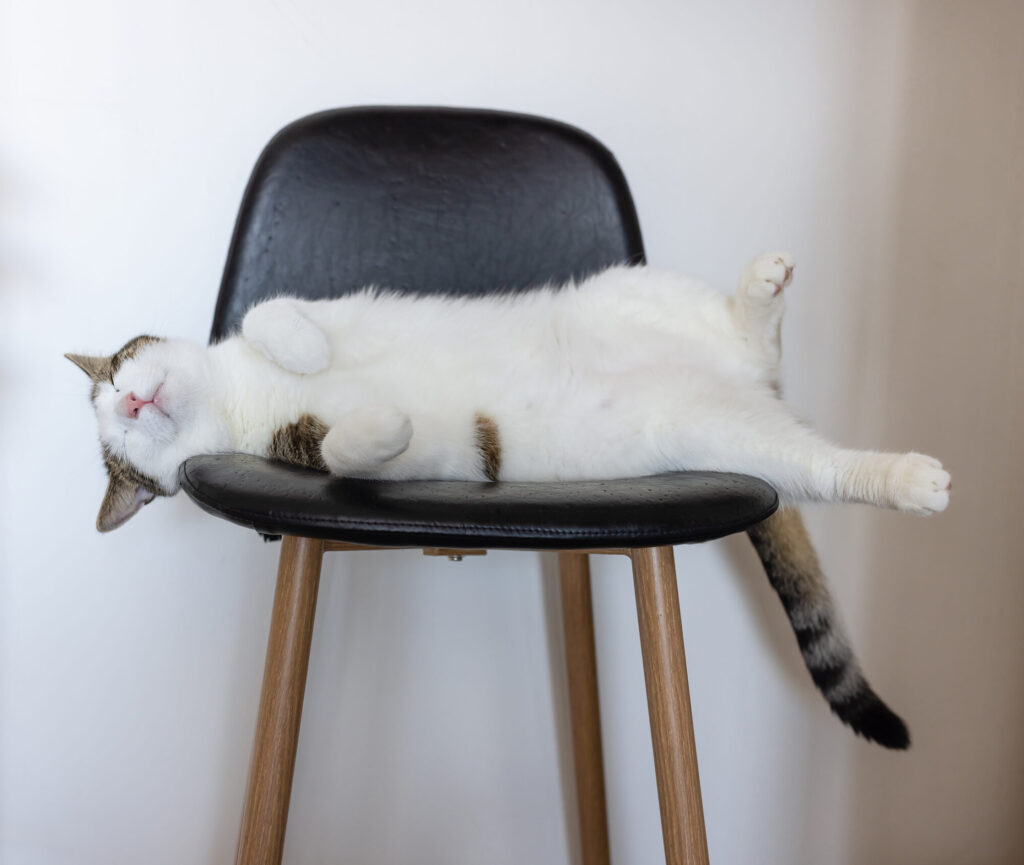

Photo lermont51/bigstock.com
#25 Cat Nap
Cats spend an average of 15 hours a day sleeping, with some cats sleeping up to 20 hours a day. This means cats will spend approximately 70 percent of their lives asleep!


Photo sjduran/bigstock.com
#26 House Panther
House cats share 95.6 percent of their genetic makeup with tigers, from which they diverged about 10.8 million years ago. The finding is the result of a 2013 study that sequenced the genomes of tigers, snow leopards, and lions. Like their wild cat relatives, domesticated cats stalk and pounce on prey and engage in scent and urine marking.
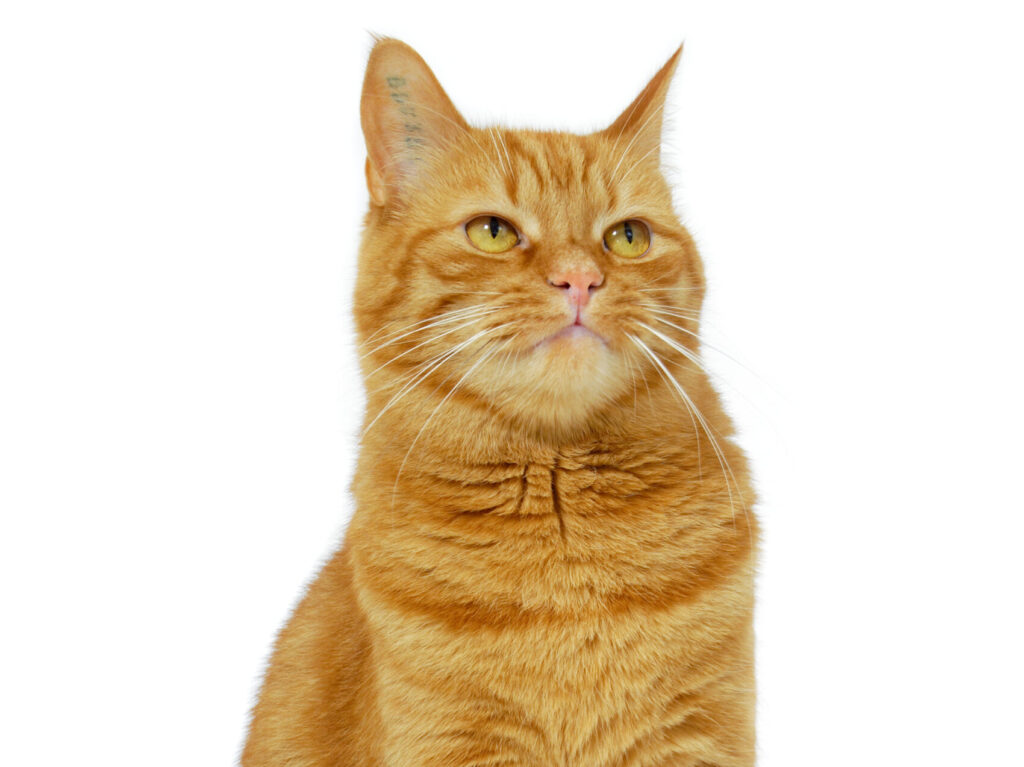

Photo c-foto/bigstock.com
#27 Orange Cat? Probably a Boy
Orange female cats are fairly rare. 80 percent of cats with orange fur are males. Furthermore, there are no solid orange felines. They all have markings of some sort, often a faint “M” on their foreheads.
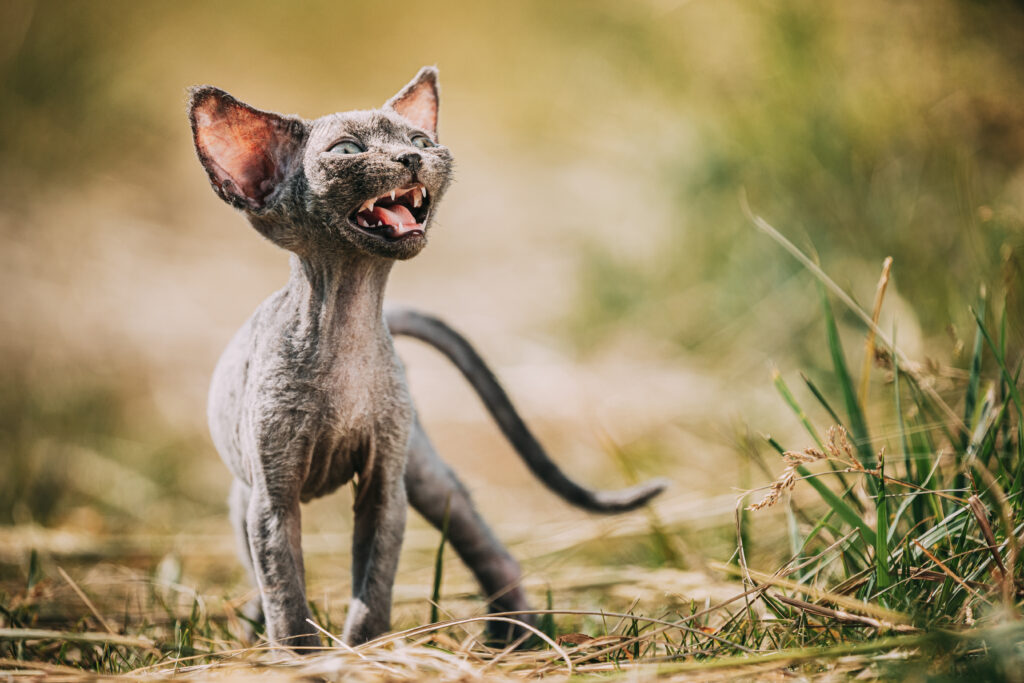

Photo: Grisha Bruev/bigstock.com
#28 Cats: Successful Manipulators
Cats know how to get what they want. According to a 2009 study, they do it by mimicking babies crying. Cats wanting to be fed will make an urgent cry or meowing sound in the 220 to 520-hertz frequency range. Babies’ cries, which humans find difficult to ignore, are also in this frequency range, usually between 300 and 600 hertz.
#29 Cats Can Get Alzheimer’s Disease
Ageing cats can develop a feline form of Alzheimer’s disease. A 2006 study identified a key protein that can build up in the feline brain, causing mental deterioration and compromising neural pathways in a similar way to that seen in human Alzheimer’s sufferers.


Photo: Supaleka/bigstock.com
#30 Fancy a Little ‘Nip?
Is your cat indifferent to catnip? Not all cats respond to it. In fact, half of cats don’t respond to Nepeta cataria at all. Sensitivity to catnip is inherited. Cats with one catnip-sensitive parent have a one in two chance of developing the sensitivity. If both parents respond to catnip, the chances of their kittens being sensitive to catnip rise to three in four.
#31 Your Cat Is Herding You—and It’s Working
Does your cat rub and dart between your legs as you walk? Your cat is herding you. “While cats are certainly not bred to be herding animals like some dogs, they do learn to direct human behaviour—and motion—when their behaviour is reinforced,” Dilara Goskel Parry, a cat behaviour expert at Feline Minds, told The Dodo. “For example, ‘I do this, and my person is going to feed me.’ Many cat owners inadvertently reinforce these behaviours by moving faster and feeding the cat.”
#32 Cats—Unique as Snowflakes
The ridges on a cat’s nose are as unique as a fingerprint.
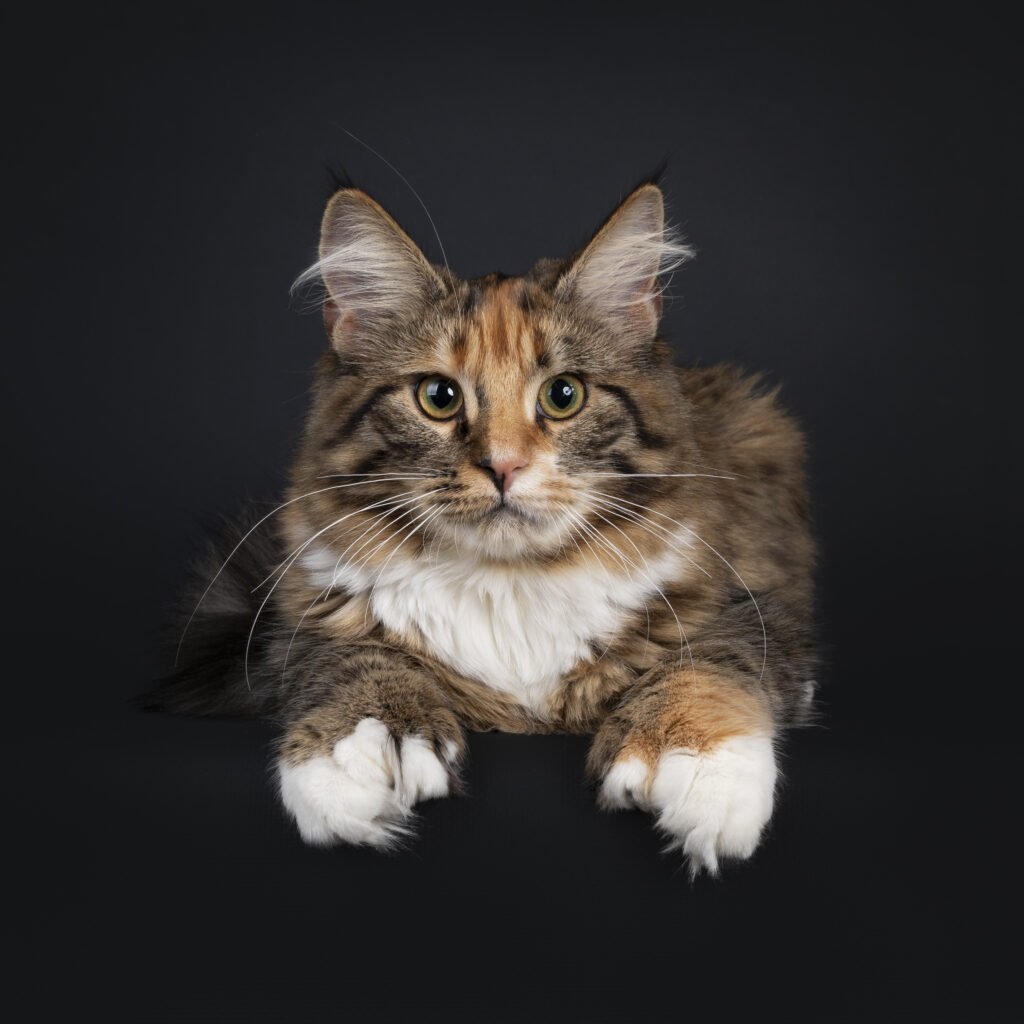

Photo: NynkevanHoltenbigstock.com
#33 More “Toe” Love
Cats are supposed to have 18 toes—five toes on each front paw and four toes on each back paw—but polydactyl cats are six-toed, thanks to the polydactyl gene. The resultant extra “thumb” on their paws gives the impression of wearing mittens. The Ernest Hemingway Home and Museum in Key West, FL is famously home to approximately 60 polydactyl cats. Ernest Hemingway was given a six-toed white cat, named Snow White, by a ship’s captain. Some of the cats who live on the museum grounds are descendants of that original cat.
#34 Eye See You
Cats are nearsighted, but their peripheral vision and night vision are much better than ours.
#35 Cats Buy Into Timeshares
Cats have developed strategies for sharing space. Professor Alan Wilson of Royal Veterinary College and a team of other scientists attached GPS trackers and cameras to 50 felines. They found that the cats appeared to timeshare territory to avoid conflict with other felines.
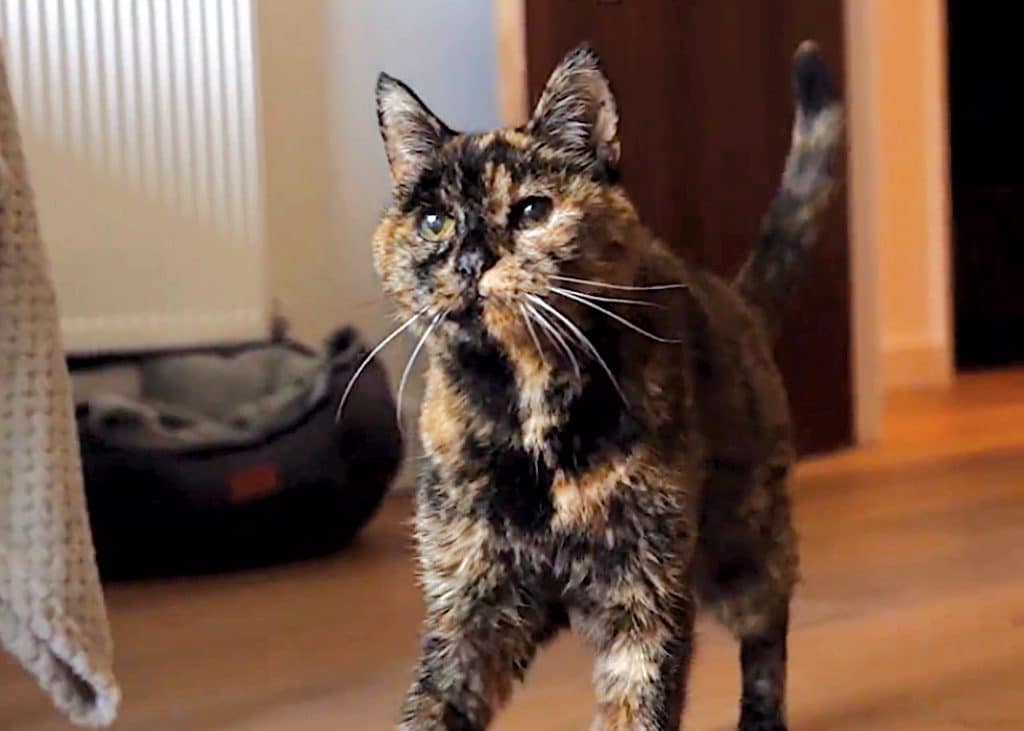

Photo Image Cat Protection
#36 World’s Oldest Living Cat
The Guinness World Record-verified oldest living cat, Flossie, is a tortoiseshell kitty from Orpington, UK. In human years, she’s over 120 years old! In cat years, she’s 27 and will turn 28 on December 29, 2023.


Photo Macrovector/Bigstock
#37 Cats Ruled Ancient Egypt
Egyptians believed cats were magical and brought good luck to the people who housed them. In 440BC, Herodotus wrote that cat owners shaved off their eyebrows as a sign of mourning following the passing of a feline. They continued to mourn until their eyebrows grew back. Deceased cats were mummified.
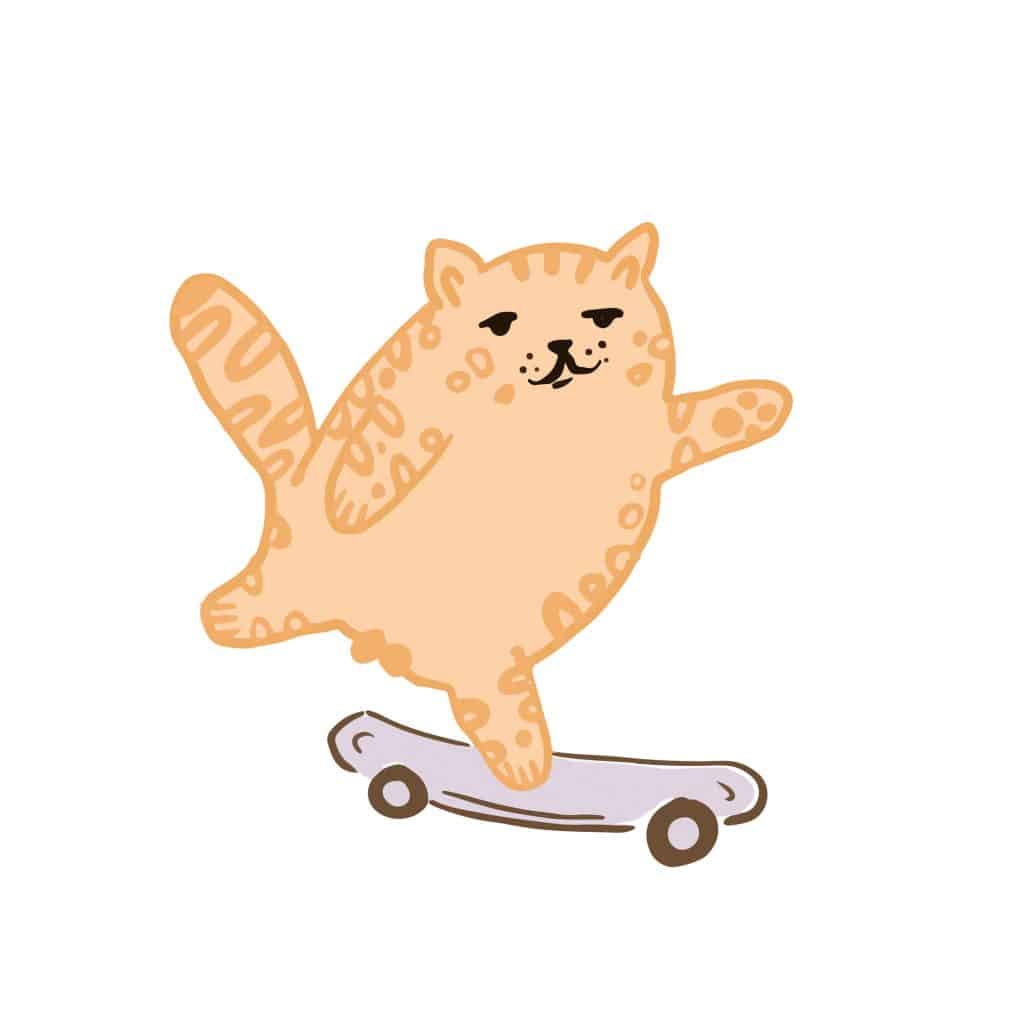

Photo TrishaMcmillan/Bigstock
#38 Who Says Cats Can’t Do Tricks?
A cat named Didga and her owner, Robert Dollwet of Tweed Heads, New South Wales, hold the Guinness World Book record for most tricks performed by a cat in one minute. In 2016, they managed an incredible 24 tricks in just 60 seconds, and still hold the record today.


Photo Macrovector/Bigstock
#39 Oldest Known Pet Cat? 9,500-year-old Burial Site Found in Cyprus
It was originally thought that Egyptians domesticated cats, but French archaeologists have found evidence that our close relationship with cats may have begun much earlier than originally thought. A 9,500-year-old cat grave discovered in Cyprus predates Egyptian art about cats by over 4,000 years, making this the oldest known pet cat.


Photo NynkevanHolten/Bigstock
#40 What’s Up with That Open-Mouth Sniffing?
That slightly open-mouthed sniffing face your cat makes? Completely normal. It’s called the “flehmen reaction.” Cats have an organ at the roof of their mouths called the vomeronasal organ, or Jacobson’s organ. This small sensory organ is composed of two fluid-filled sacs connected to the nasal cavity. When your cat sniffs, leaving their mouth open for a few seconds, they’re actually drawing air past the Jacobson’s organ. This helps the organ to process the scent more deeply than your cat’s nose can and sends signals to your cat’s brain. This incredible organ makes your cat’s sense of smell 14 times better than a human’s!
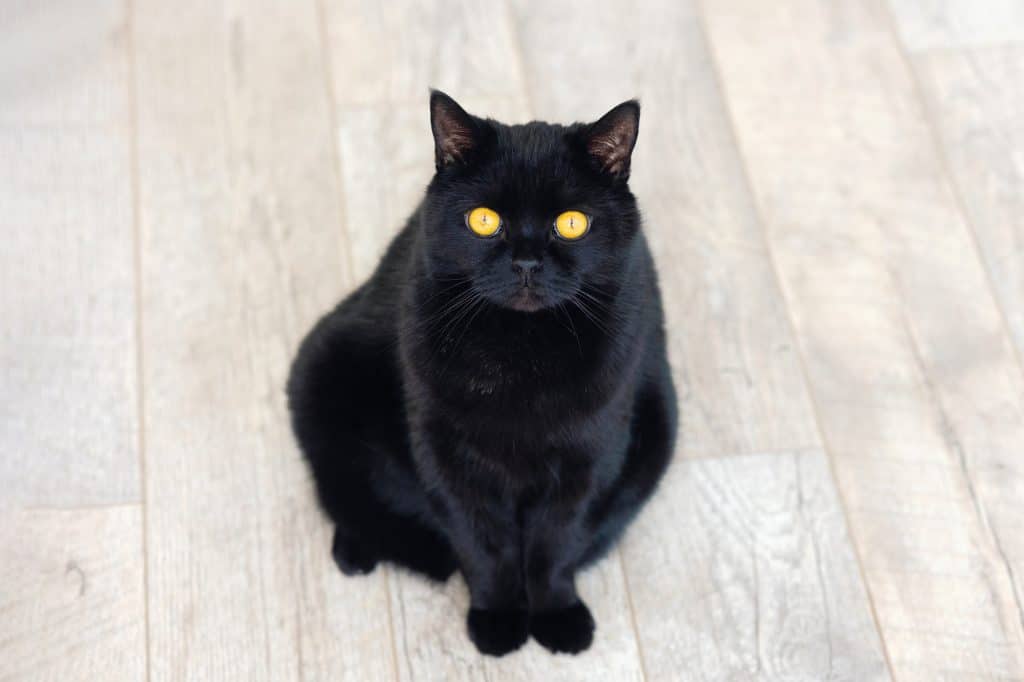

Photo Katya Slavashevich/Bigstock
#41 World’s Richest Cat
When UK millionaire antiques dealer Ben Rea passed away in 1988, he left his beloved pet cat Blackie a £7 million inheritance. The reclusive cat owner refused to recognize his family in his will, instead leaving his fortune to three cat charities, along with the instruction that they were to look after Blackie for the duration of the cat’s life.
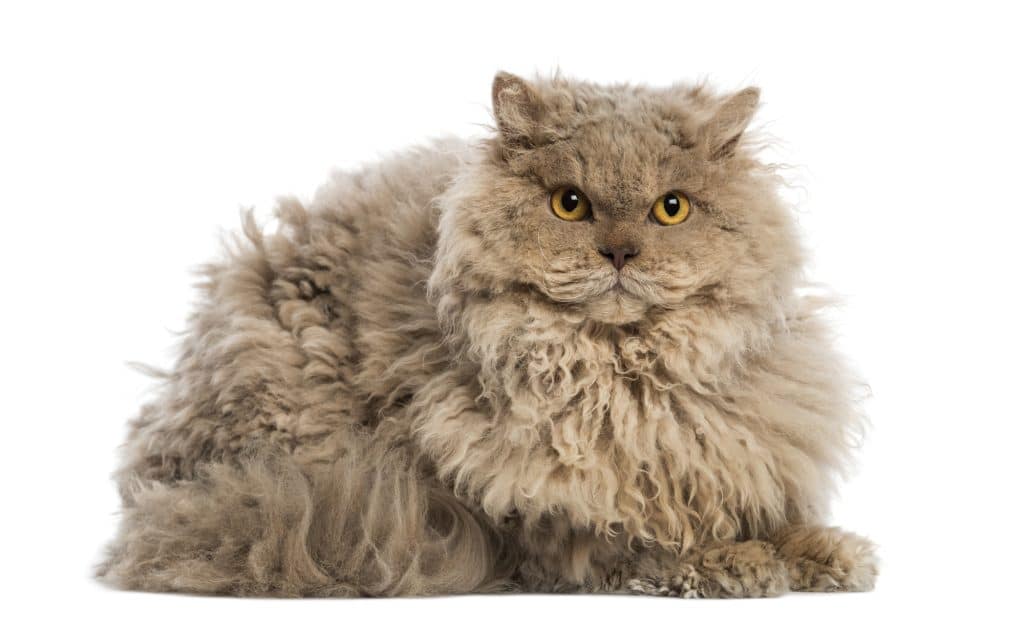

Photo Life on White/Bigstock
#42 Newest Cat Breed
The most recently recognized breed of domestic cat is the Selkirk Rex, known for its thick, curly fur. The Selkirk Rex arose from a spontaneous genetic mutation in a cat born in Montana in 1987, from which the breed was developed. In 2013, the Selkirk was officially recognized as a genetically distinct line by the University of Veterinary Medicine in the USA, and it has been recognized as a valid separate breed by the International Cat Association, the American Cat Fanciers Association, and the Cat Fanciers’ Association.


Photo barrirret/Bigstock
#43 Vocal Cats
Much like birds, cats make many different sounds. In fact, cats can make up to 100 sounds—from purrs and growls to trills—whereas dogs only make 10. Of these sounds, adult cats meow exclusively to communicate with people, not other cats. Kittens meow to let their mother know they’re cold or hungry, but once they’re older, cats no longer meow to other cats.
This article originally appeared in the award-winning Modern Cat magazine. Subscribe today!
Do you have a canine friend? Check out these interesting dog facts for all dog lovers.
